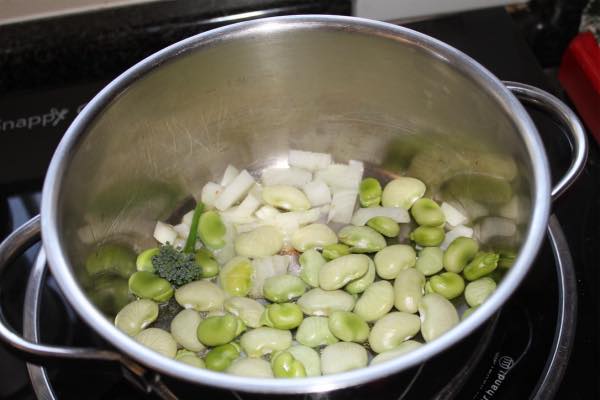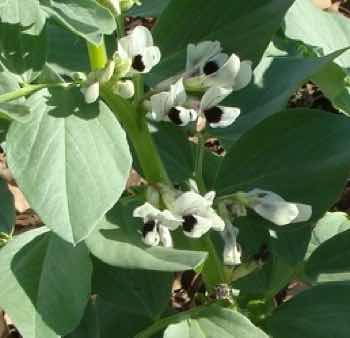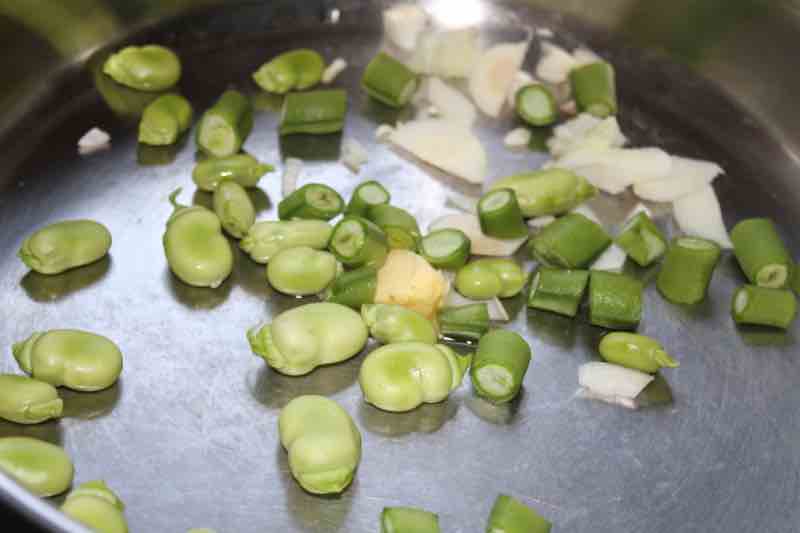| Back to Back Issues Page |
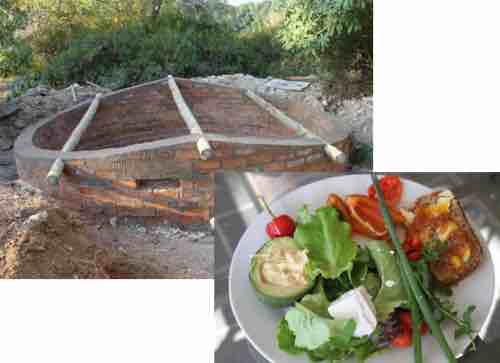 |
|
Grow broad beans for longevity July 28, 2020 |
DearGrow broad beans for longevityGreetings from Bernard Preston to this fifth newsletter about how to create a cyan zone at your home. In our first letter which you can find in back issues we explained how a Cyan Zone combines the blue issues of longevity with green concerns about the health of the planet. Today we talk about growing broad beans, also known as favas. I find it absolutely fascinating that there are only five blue zones in the world where longevity is the norm and, in all four of them, they completely independently grow broad beans. I would be quite surprised if you have eaten any in the last year, and if you've ever been served them, you probably disliked them, perhaps intensely. Such was it with me for nearly sixty years; that first helping put me off for a very long time. They were tough, tasteless and starchy; in short, awful.
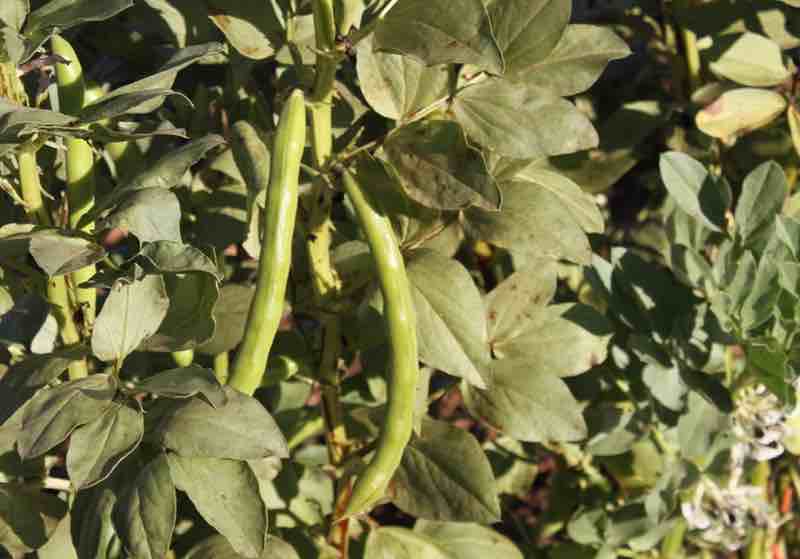
You are most unlikely to see broad beans in the shops; I haven't for many years. Yet they are not difficult to grow but they do require patience and regular attention. The branches become very heavy with the fruit and must be supported. Perhaps this puts gardeners and farmers off. “It has been said that failure should be our teacher, not our undertaker." - Denis Waitley Why are broad beans so disliked?I can only tell you why I disliked broad beans; for some unknown reason, unlike other fruit and vegetables, they are rarely reaped and served when they are young and tender. By the time they reach the shelves of the supermarket they have become hard and starchy.Also they lose their firmness within a day and become less than exciting to eat. They are mostly podded and eaten like peas rather than whole like green beans; it's a mistake. The breakthrough for me personally came when my brother-in-law served broad beans with cream and thyme a few years back and I, not knowing what I was eating, enjoyed them immensely. That got me intrigued when I was told they were my pet hate and I started studying them. When I realised you could harvest the young fruit, top and tail them, and enjoy your whole broad bean pods that was another big step forwards. As I reported above they are sometimes known as fava beans.
Well, you have to add ten minutes to harvest them from the garden; you will never find young broad beans like these, mixed with limas, in the shops. Growing broad beansLike peas, broad beans do less well in hot weather. In our moderate climate we plant in late summer and early spring; they are resistant to frost.I have had difficulty getting bought seed to germinate; it's best to put them between layers of damp newspaper for a few days. Now we keep our own seed and have little trouble planting directly in the ground. 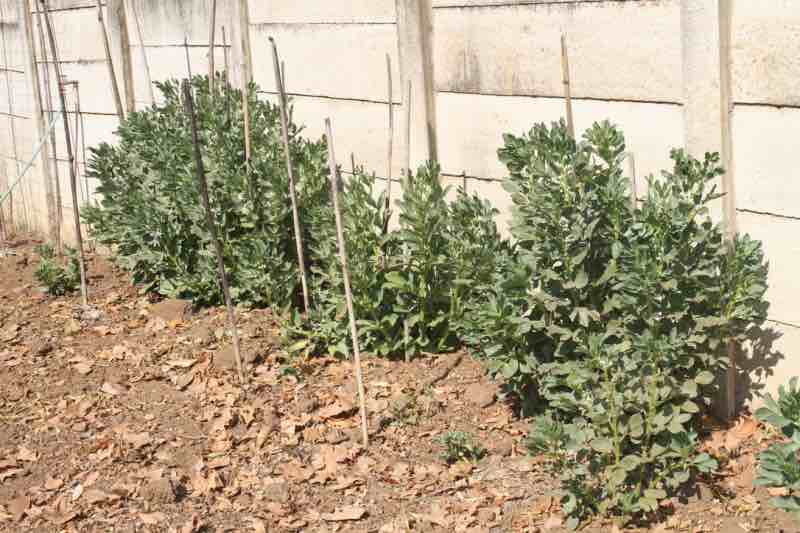
These young broad bean plants will grow very quickly and already should be staked and supported by twine, or they will fall over and the branches break.
Interestingly, though the bacteria on the roots of broad beans, and all legumes, are the chief source of nitrogen fixation from the atmosphere, the plants also flourish with extra nitrogen. These plants growing near the fowl run where they certainly get runoff from the chicken litter have done particularly well. And a recent light hailstorm gave them an emphatic boost; that's the source of 10% of the nitrogen in the soil. Nitrogen fixation bacteria 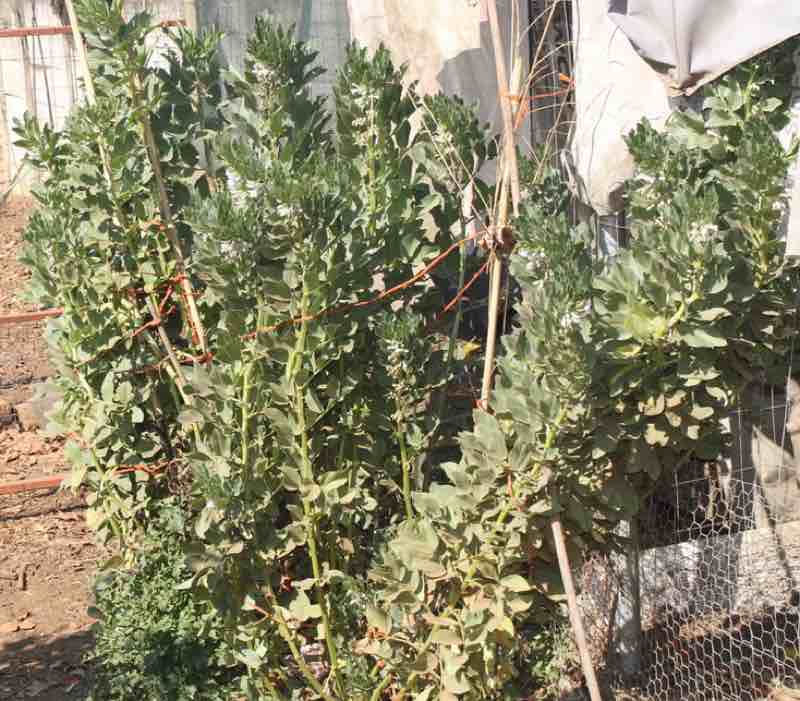
What is so special about broad beans?Broad beans are one of the very rare sources of natural L-dopa, the precursor of dopamine, a neurotransmitter that is synthesised by nerve cells in the colon and in a nucleus in the brain called the Substantia Nigra.These cells are particularly sensitive to certain neurotoxic chemicals and, should they atrophy and die, humans get a particularly nasty and pernicious condition called Parkinson's disease. It affects nearly 2% of older folk. No one seems sure what these chemicals are; there are probably many of them. I suspect the food colouring, preservatives and flavour enhancers, but I have no evidence to support the belief. Perhaps it's a myth. Folk with low dopamine are also more likely to go blind from macular degeneration, and suffer from stomach ulcers. It is little wonder that Blue Zone folk are so much more healthy. They are also the legume with the highest amount of vegetable protein; nearly 25%. Those suffering from Parkinson's disease report that the dopamine from broad beans gives them much longer lasting relief, and fewer of the nasty dystonias as compared to taking the medication. There has been some research suggesting that regular ingestion of broad beans actually prevents Parkinson's disease, but further work needs to be done to confirm this.
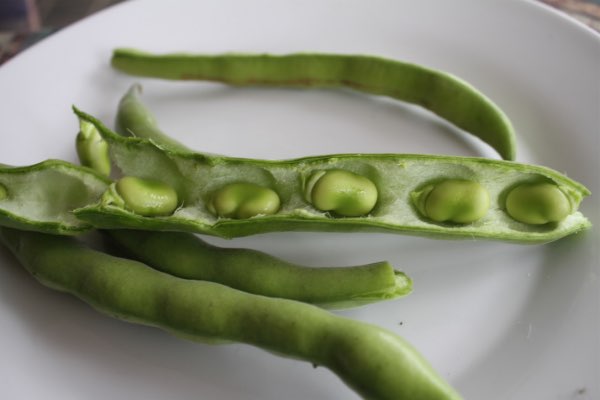
Podding broad beansPodding broad beans is frankly tiresome, and is one of the reasons I suspect that many folk are reluctant to grow and eat them.It was a big step forward for us personally when we discovered that there is even more L-dopa in the young pod than the bean. Now we simply top and tail the young pods and enjoy them almost every day of the year, often in our variation of the famous and wonderful eggs Florentine.
So, we have decided that seeing that we want to live long in the land, and not just long but vital and active with all our marbles intact; so we try to emulate the things that Blue Zone people do. Take it further, and create a Cyan Zone, caring not just for yourself and your family, but the planet too.
How much would you save?Researchers found that fava beans are a good source of natural L-dopa, improving motor performance without any of the unpleasant side-effects the synthetic drug often brings; they recommend starting with about 6 whole beans a day, or one young pod.Two thirds of those suffering from Parkinson's disease can get better relief from symptoms by consuming the beans than from medication. One plant would yield perhaps 50 pods; they continue to bear for at least six weeks and often much longer. Depending on the degree of destruction of the Substantia Nigra just one plant would provide enough of a substitute for medication for over a month. Add to that the saving of medication and injections into the eyes for Macular Degeneration, and the treatment of ulcers. Grow broad beans for longevity and a huge potential saving of cash; and misery.
Next weekNext week features the Green Zone; the importance of compost heaps in capturing carbon dioxide from the air. You too do your bit for King and Country; for yourself and the planet.Pass this newsletter on to friends and family; soon greenies are hoping that awareness of the way we are destroying the environment will reach a tipping point; the place where a substantial number of people all try to do some small things to reverse the destruction of the place where our children's children will have to live. Getting more of your amino acids from broad beans than red meat will not only help protect you from some very pernicious diseases, but also provide more nitrogen for the soil, and use one tenth of the water to provide the same amount of protein from beef. Growing broad beans for longevity is at the heart of Cyan Zone understanding.
Bernie
1. Health nut neurosis
|
| Back to Back Issues Page |
